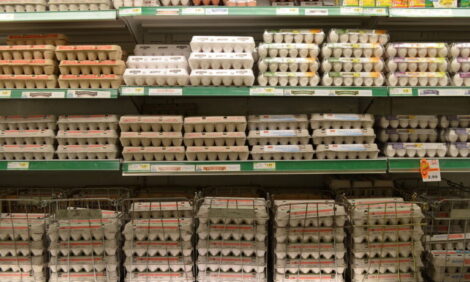



Examining broiler behaviour to reduce or prevent heat stress
Researchers examined whether broiler behaviour changed with increasing ambient temperatures. The results are surprisingResearchers from Animal Breeding and Genomics, Wageningen University & Research (WUR-ABG) examined whether broiler behaviour changed with increasing ambient temperatures. Their results suggest that, contrary to what one might expect, the animals tend to move closer together as the temperature increases. Their research was recently published in Poultry Science.
“Heat stress in broilers is a pressing issue in the changing climate,” says Pascal Duenk, researcher and first author of the paper. “Data on broiler behaviour can be useful for early detection of heat stress and subsequent intervention, and may provide indicators for heat tolerance that can be used in broiler breeding programs.”
Birds experiencing heat stress have difficulty achieving a balance between body heat production and heat loss. Heat stress can cause a cascade of physiological responses, which in turn has a negative effect on the birds’ health, welfare, and production efficiency. In extreme cases, it can even lead to premature death. Hence, it is important to reduce heat stress in broilers to improve the overall sustainability of broiler production.
Detecting heat stress at an early stage
There are already various management interventions that can help reduce heat stress, for example additional ventilation, spraying of water, and adjusting feed strategies. However, such interventions may not always be sufficient, and are often only implemented when the birds are already experiencing the negative effects of heat stress. “For intervention to be effective and prevent negative effects on broiler welfare, farmers need to be able to detect heat stress at a very early stage,” says Pascal.
Surprising results
The researchers examined whether broiler behaviour changed with increasing ambient temperatures, focusing on the dispersion of animals across the pen and individual activity levels. Surprisingly, their findings were not in line with results from earlier studies. “We observed that the birds moved closer together with increasing temperatures up to 9 degrees Celsius above the desired level, and remained in similar proximity or moved further apart at temperatures above that threshold,” says Pascal. “The activity level of the birds decreased or remained stable with increasing temperatures during most parts of the day, but increased at the end of the day.”
It’s not clear why the birds huddled together as the temperature increased; the expected result would be for them to move farther apart to allow more airflow around the body, making it easier for them to dissipate body heat. “Yes, the results seem counterintuitive,” says Pascal. “It could be that the birds exhibited compensatory behaviour (for example many birds drinking water at the same time, resulting in a high density of birds around the drinkers), or that they grouped in places where there was a higher airflow or cooler floor areas. However, these hypotheses could not be confirmed because of a lack of data.”
Overall, the results of the study show that barn temperature affects both group-level dispersion and individual-level activity in broilers. Contrary to expectation, birds clustered more in response to high barn temperatures, and the effect of high barn temperatures on individual activity differed between different time periods. Most notably, activity increased at the end of the day with higher barn temperatures, which likely coincides with the barn cooling down. The results can help design early-warning systems for heat stress in broilers, as well as potential automated detection of cold or hot spots in the barn, based on behavioural indicators. Also, the results suggest that activity data at the individual-level can potentially provide information about differences in heat tolerance between broilers, which could be interesting for breeding purposes.








